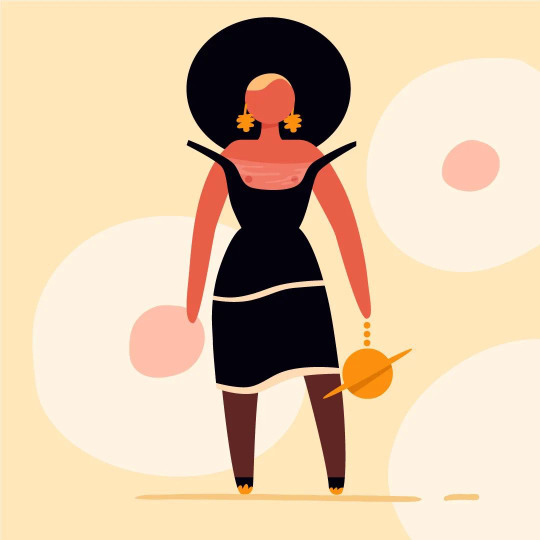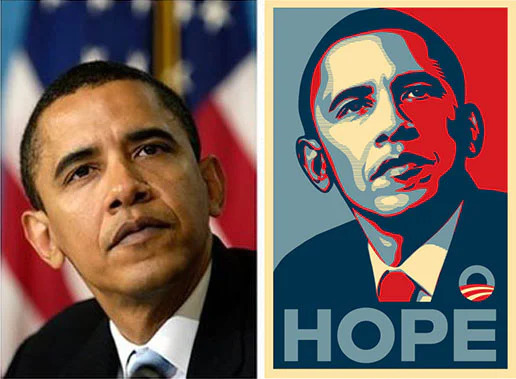Text
Image Types and Tools.
What is Vector Art?
Vector art is a digital art form that is created using mathematical equations instead of pixels. This means that vector graphics can be scaled up or down without losing their clarity or resolution, unlike raster graphics which can become pixelated or blurry. In vector art, designers use points, lines, curves, and shapes to create images that can be easily edited and manipulated. Popular software programs for creating vector art include Adobe Illustrator, CorelDRAW, and Inkscape.
Vector art is widely used in creating logos, illustrations, and other graphic design elements that need to be resized frequently or used across various media without loss of quality. This is because vector graphics can be easily adjusted to fit different sizes and formats without losing their sharpness. Additionally, vector art is also popular for creating animations, as the mathematical equations used can be manipulated to create movement and motion. Overall, vector art is a powerful tool for designers and artists who require high-quality graphics that can be scaled and edited with ease.
Why is Vector Art used widely in both Screen and Print?
Vector art is widely used in both screen and print media because of its flexibility and versatility. Here are some reasons;
Scalability; Vector graphics are resolution-independent, which means that they can be scaled up or down without any loss of quality. This makes them ideal for use in print media, where images need to be printed at different sizes.
Edit-ability; Vector graphics can be easily edited and manipulated in various ways, such as changing the colour, shape, or size of individual elements. This makes them highly adaptable for different design needs.
Consistency; Vector art can be used to create elements that are consistent across different media, such as logos for websites and printed brochures.
File size; Vector graphics typically have smaller file sizes compared to raster images, making them easier to work with and store.
Precision; Vector graphics can be created with precise measurements, making them ideal for technical drawings, maps, and diagrams.
What are the benefits of using Adobe illustrator to create digital images?
Vector-based graphics; Adobe Illustrator is a vector-based program, which means that graphics created in the program can be scaled up or down without losing their quality. This makes it ideal for creating artwork that needs to be used in different sizes and formats, such as logos or icons.
Precise control; Adobe Illustrator offers precise control over every aspect of an image, allowing artists to create complex and intricate designs with ease. It also offers a variety of drawing tools, such as the Pen Tool, that enable users to create curved lines and shapes with precision.
Easy to edit; Illustrator makes it easy to edit and modify existing artwork. Users can easily adjust the color, shape, or size of an element, or even move it to a different position within the design.
Versatile output formats; Adobe Illustrator supports a wide range of output formats, including PDF, SVG, and EPS. This makes it easy to export artwork for use in various media, such as print or web.
Integration with other Adobe software; Adobe Illustrator integrates easily with other Adobe software, such as Photoshop and InDesign. This allows users to create and edit artwork in one program and then easily transfer it to another program for further processing.
Briefly explain the purpose of the Pen tool, the Brush tool and the Pencil tool when creating digital images and describe when it would be appropriate to use these tools.
Pen Tool: The Pen tool is used to create precise, curved lines and shapes. It is ideal for creating logos, illustrations, and other designs that require a high degree of accuracy. The Pen tool is also useful for creating paths for text to follow or for creating selections to apply effects.
Brush Tool: The Brush tool is used to create freehand strokes that resemble traditional art brushes. It is ideal for creating illustrations that have a more organic and natural feel, such as sketches or watercolor paintings. The Brush tool can be used with various brush shapes and sizes to create a range of effects.
Pencil Tool: The Pencil tool is used to create freehand drawings and sketches. It is ideal for creating rough sketches or for adding details to existing artwork. The Pencil tool can be used with different brush sizes and shapes to create a range of effects.
3 Example of Vector Art, tools used to create these Artworks and why they Work.

Sarah Alice Rabbit most likely used the pen tool and shape tool to create her fluid and balanced clean line and shapes. This artwork works well because its very clean and striking.
Instagram. (n.d.). Sarah Alice Rabbit on Instagram: ‘I created this illustration using @vectornatorpro on my Mac for the first time and I’m super happy how it turned out. The interface is really smooth and intuitive, and even tho I prefer working on my Mac, the IPad version works for me very good as well! Did you already try it? #vectornator #madewithvectornator #vectornator4 (paid partnership with @vectornatorpro )’. [online] Available at: https://www.instagram.com/p/CNDKhOvLtFV/ [Accessed 27 Feb. 2023].

Keith Nicodemus likely used the pen tool as well as a patterned or scatter brush to create this artwork. the image works well because it is very balanced and structured.
Nicodemus, keith (n.d.). Pensive Winterland by Setherpiece on DeviantArt. [online] www.deviantart.com. Available at: https://www.deviantart.com/setherpiece/art/Pensive-Winterland-835139007 [Accessed 27 Feb. 2023].

Krystal Lack probably used the pen tool and the refection tool to create this artwork. this artwork is so eye catching because its simple with clean lines and shapes and to is very balanced.
Instagram. (n.d.). Krystal Lauk on Instagram: ‘I’ve been abolutely obsessed with the new #schiaparelli spring-summer 2022 collection. I love how this surrealist fashion house as gained so much momentum in the mainstream. I think this is one of my favorite looks... Making nipples an aesthetic feature to the outfit! #surrealism #fashion #illustration’. [online] Available at: https://www.instagram.com/p/CZPgQ7aJ753/?hl=en [Accessed 27 Feb. 2023].
1 note
·
View note
Text
Image Regulations.
Australian Copyright Laws
The regulation of copyright in Australia is governed by the Copyright Act of 1968. This Act offers legal protection for original works, including literary, artistic, musical, and dramatic works, as well as films, sound recordings, and broadcasts. Typically, copyright protection lasts for the lifetime of the creator plus an additional 70 years.
The rights of copyright owners include exclusive control over the reproduction, publication, performance, communication, and adaptation of their works, except for some exceptions such as fair dealing and educational use. The Australian Copyright Council is an organization that offers guidance and resources to both creators and users of copyrighted material, helping them navigate the intricacies of copyright law. With the protection offered by copyright law and the assistance of resources like the Australian Copyright Council, creators can feel secure in their rights to their original works.
Explain what Copyright means.
Copyright is a legal concept that grants creators of original works the exclusive right to control how their work is used and distributed. This includes works such as literature, music, films, photographs, and software. Copyright provides a way for creators to protect their intellectual property and to earn money from their creations by controlling who can use them and how they can be used. Copyright can also provide incentives for creativity and innovation by giving creators the ability to profit from their work. In most countries, including the United States, copyright protection is automatic upon creation of an original work, although registration with a government agency may be required to enforce certain rights. Copyright protection typically lasts for a certain number of years after the creator's death, although the exact duration varies by jurisdiction.
Why do we have Copyright laws?
We have Copyright laws;
To encourage creativity and innovation: Copyright laws provide an incentive for creators to produce original works by giving them exclusive rights over their creations for a limited period of time. This allows creators to earn a living from their work and encourages them to continue creating new works.
To protect intellectual property: Copyright laws protect the economic rights of creators and prevent others from using their work without permission or compensation. This helps to prevent unauthorised copying, distribution, and exploitation of creative works.
To promote cultural diversity: Copyright laws help to promote cultural diversity by protecting the works of creators from different backgrounds and allowing them to share their perspectives with a wider audience.
To foster knowledge sharing: Copyright laws include certain exceptions and limitations that allow for the use of copyrighted works in certain circumstances, such as for educational purposes or criticism and review. This promotes the sharing of knowledge and ideas while still protecting the rights of creators.
How long does Copyright last?
In Australia, copyright protection typically lasts for the life of the creator plus 70 years after their death for literary, dramatic, musical, and artistic works. Copyright protection for sound recordings and films generally lasts for 70 years from the year of first publication or release. Copyright protection varies from country to country.
What happens if you break Copyright Laws?

Rogers vs. Koons
Art Rogers a photographer captured a image of a couple holding eight puppies in a line between them. He ended up selling this photo to be used in greeting cards. An intern
ationally famous artist by the name of Jeff Koons saw Rogers photograph one day and decided to create a set of statues based on the image.
Koons ended up selling these statues for a large profit, when Rogers discovered this he sued Koons for copyright, Koons responded, claiming fair use by parody.

The Associated Press vs. Fairey
Shephard Fairey a famous street artist created that Hope poster during President Obama’s 2008 presidential run. The poster quickly became a symbol of Obama’s campaign.
In January 2009 Associated Press revealed that photograph Fairey allegedly his poster on was shot by Mannie Garcia. Associated Press demanded compensation and Fairey responded by stating fair use claiming that his poster didn’t reduce or undercut the value of Garcia’s photograph.
Fairey and Associated Press came to a settlement privately in January 2011. The profits from the work were then split between the two.
What percentage if any, of a Copyrighted image are you legally allowed to use in your Artwork?
There is no specific percentage of a copyrighted image that you are legally allowed to use in your artwork without permission from the copyright owner.
In general, any use of a copyrighted image in your artwork without permission could be considered infringement, regardless of the amount or percentage of the original work that you use. However, there are certain situations where the use of copyrighted material may be considered "fair use," which is a legal exception to copyright infringement.
The determination of whether a particular use of copyrighted material constitutes fair use depends on several factors, including the purpose and character of the use, the nature of the copyrighted work, the amount and substantiality of the portion used in relation to the copyrighted work as a whole, and the effect of the use on the potential market for or value of the copyrighted work.
In general, if your use of a copyrighted image in your artwork is transformative, meaning that it creates something new and different from the original work, and if your use is not likely to compete with the market for the original work, then it may be more likely to be considered fair use. However, it's always a good idea to consult with a legal professional if you have questions about the use of copyrighted material in your artwork.
What are Moral Rights?
Moral rights are a type of legal right that are designed to protect the non-economic interests of creators in their works. Unlike economic rights, which focus on the financial benefits of ownership, moral rights are concerned with the integrity of the work and the reputation of the creator.
Moral rights are designed to protect the personal and cultural value of creative works, and to ensure that creators are given proper recognition and respect for their contributions to the world of art and culture.
How can you assert your Copyright and Moral Rights when publishing your original Artwork?
To assert Copyright and Moral Rights over your own artwork you should;
Register your copyright: This can help you establish a record of your ownership of the work and may be helpful in the event of any disputes or infringements.
Include a copyright notice: When you publish your artwork, include a copyright notice that identifies you as the owner of the work and specifies the year of first publication. This can help to put others on notice that you assert ownership over the work and may deter potential infringers.
Consider licensing: If you want to allow others to use your work in certain ways, you can consider licensing your work under a Creative Commons license or another type of licensing agreement. This can help you retain control over your work while allowing others to use it in specific ways.
Assert your moral rights: When publishing your artwork, include a statement asserting your moral rights, such as "All moral rights reserved" or "The moral rights of the author have been asserted". This can help to put others on notice that you assert your moral rights over the work and may help to deter potential infringers.
Itzkoff, D. (2009). A.P. Says It Owns Image in Obama Poster. [online] ArtsBeat. Available at: https://archive.nytimes.com/artsbeat.blogs.nytimes.com/2009/02/05/ap-says-it-owns-image-in-obama-poster/?_php=true&_type=blogs&_r=0&_ga=2.109021830.544030349.1677495525-2062055781.1677495525 [Accessed 28 Feb. 2023].
Design Observer. (n.d.). Art Rogers vs. Jeff Koons. [online] Available at: https://designobserver.com/feature/art-rogers-vs-jeff-koons/6467?_ga=2.179807136.544030349.1677495525-2062055781.1677495525 [Accessed 28 Feb. 2023].
2 notes
·
View notes